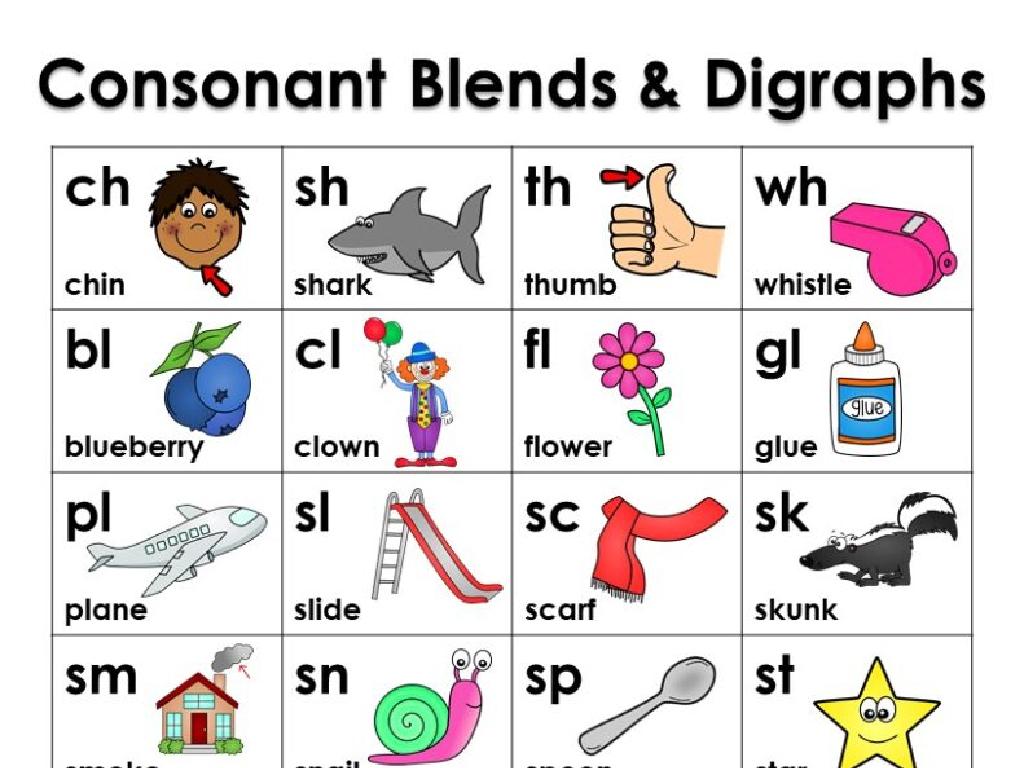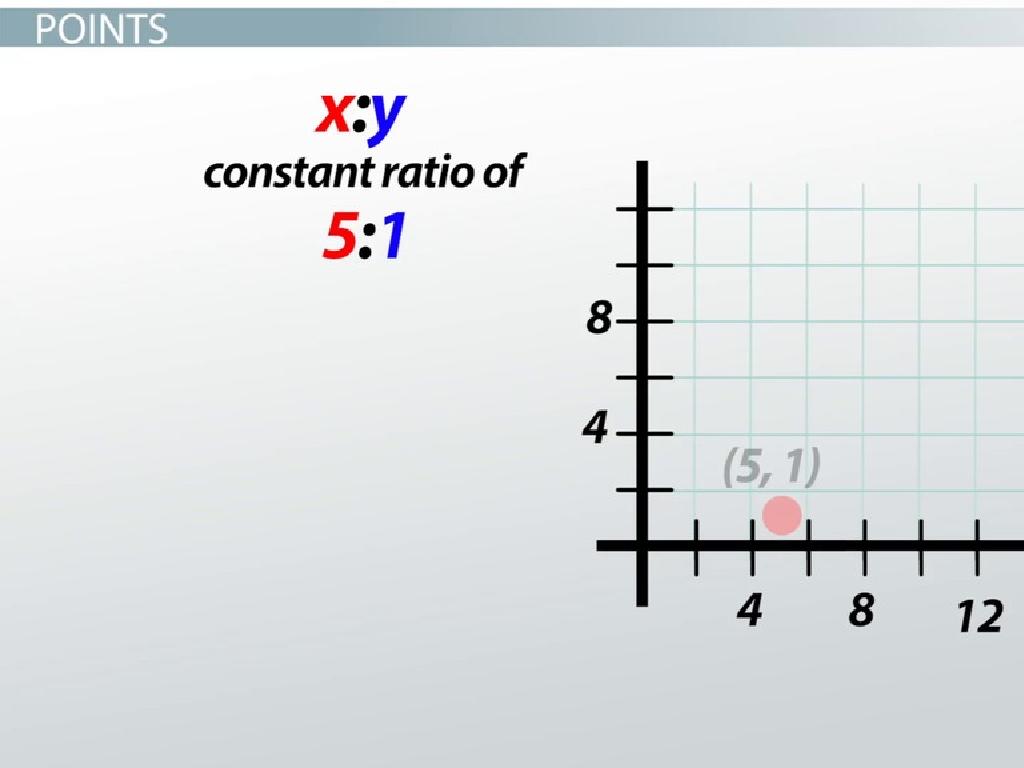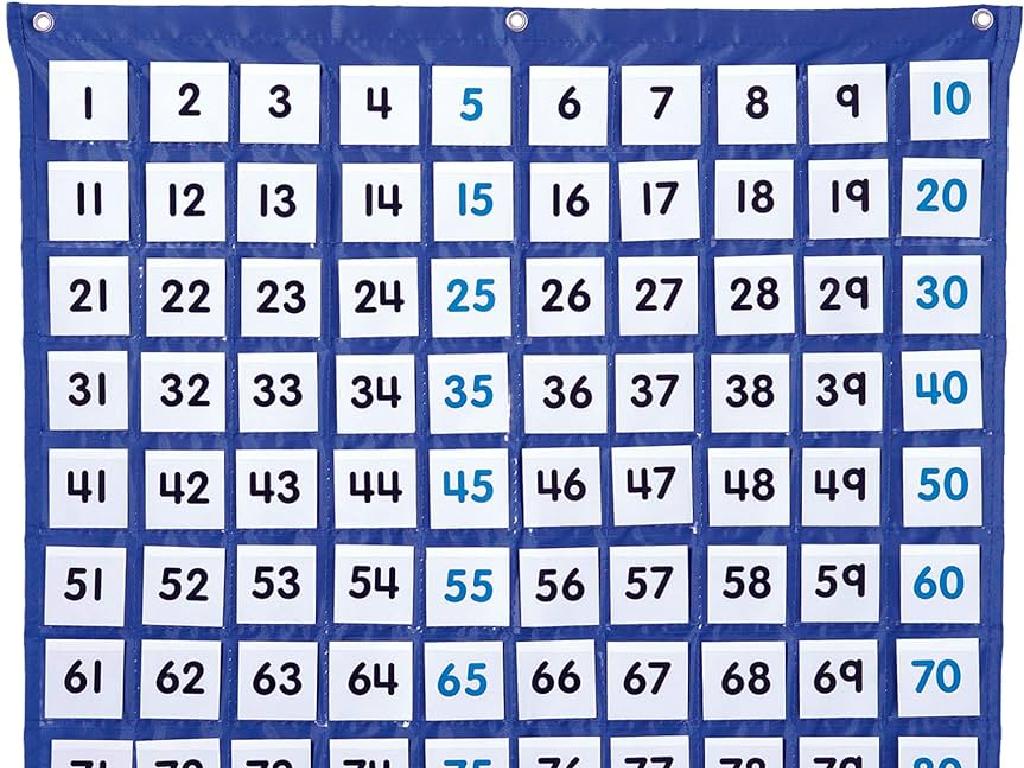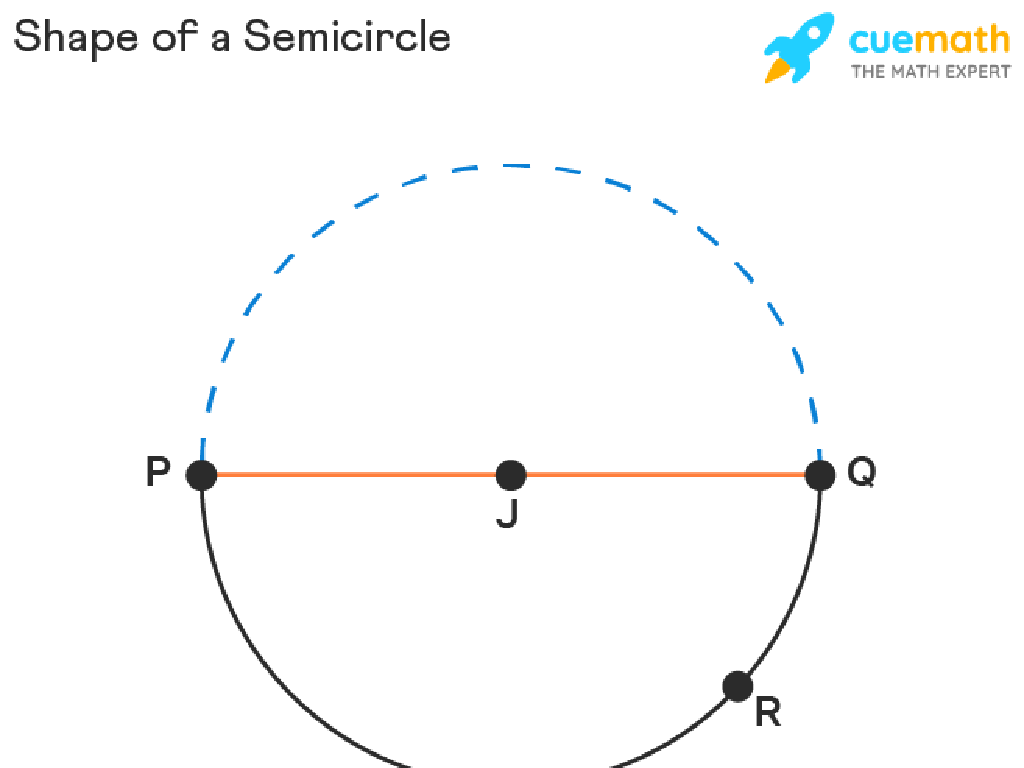Experimental Probability
Subject: Math
Grade: Eighth grade
Topic: Probability
Please LOG IN to download the presentation. Access is available to registered users only.
View More Content
Introduction to Probability
– Understanding chance in probability
– Probability measures the likelihood of an event occurring.
– Probability in everyday life
– Coin flips, weather forecasting, and lottery draws.
– Theoretical vs. Experimental Probability
– Theoretical is based on expected outcomes, while experimental is based on actual trials.
– Significance of experimental probability
|
This slide introduces the concept of probability as a measure of chance, helping students understand how likely an event is to occur. Provide real-life examples to illustrate probability, such as the chance of rain or getting a heads when flipping a coin. Explain the difference between theoretical probability, which is what we expect to happen in an ideal scenario, and experimental probability, which is what actually happens when we perform an experiment. Emphasize the importance of experimental probability in understanding and predicting real-world scenarios, as it takes into account the randomness and unpredictability of events.
Understanding Experimental Probability
– Define Experimental Probability
– The likelihood of an event based on actual trials or experiments
– Contrast with Theoretical Probability
– Theoretical uses ideal conditions, while experimental is based on actual results
– Role of experiments in probability
– Experiments provide empirical data to estimate the probability of events
– Significance in real-world scenarios
– Helps predict outcomes in fields like medicine, finance, and weather forecasting
|
Experimental probability is determined by carrying out a number of trials and observing the outcomes, which provides a practical approach to understanding probability. It’s important to highlight the difference between experimental and theoretical probability, with the latter being based on what should happen in an ideal situation. Through experiments, students can collect data to estimate the likelihood of various outcomes, which is a fundamental aspect of statistical analysis. Emphasize the relevance of experimental probability in real-world applications, such as predicting the effectiveness of a new drug or the chance of rain. Encourage students to think critically about how probability affects decision-making in everyday life.
Calculating Experimental Probability
– Understanding P(E) = E occurrences / Total trials
– P(E) is the probability of an event E happening.
– Key components: event, outcome, trial
– Event: what we’re measuring; Outcome: result of a single trial; Trial: each attempt or test
– Example: Coin flipping
– Flipping a coin 100 times, count how many times it lands on heads.
– Example: Rolling a die
– Rolling a die 50 times, tally the rolls that result in a six.
|
This slide introduces the concept of experimental probability, which is the ratio of the number of times an event occurs to the total number of trials. It’s important to clarify the meaning of ‘event,’ ‘outcome,’ and ‘trial’ in the context of probability. Use tangible examples like flipping a coin or rolling a die to illustrate these concepts. For instance, if a coin is flipped 100 times and lands on heads 45 times, the experimental probability of flipping heads is 45/100. Similarly, if a die is rolled 50 times and the number six comes up 8 times, the experimental probability of rolling a six is 8/50. These examples will help students grasp the practical application of the formula for experimental probability.
Factors Affecting Experimental Probability
– Impact of sample size
– Larger samples give more accurate probabilities.
– Repetition and reliability
– More trials, better reliability of results.
– Concept of randomness
– Randomness can influence outcomes unpredictably.
– Effects of randomness on probability
– Random events can skew experimental results.
|
This slide discusses the key factors that influence experimental probability. Emphasize the importance of sample size; larger sample sizes tend to yield results that are closer to the true probability. Explain how repeating experiments multiple times increases the reliability of the probability outcome. Discuss the concept of randomness and how it can affect the results of an experiment, making it difficult to predict outcomes with certainty. Highlight that while randomness can introduce variability, it is also a fundamental aspect of experimental probability that needs to be understood and accounted for when interpreting results. Provide examples such as flipping a coin or rolling a dice to illustrate these concepts.
Experimental Probability in Action
– Conduct a simple probability experiment
– Flip a coin 50 times and tally heads or tails
– Collect and record experiment data
– Use a table to keep track of each outcome
– Organize data systematically
– Create a chart or graph for visual organization
– Interpret results from the data
– Analyze the frequency of outcomes to determine probability
|
This slide introduces students to the concept of experimental probability through hands-on experience. Start with a simple experiment, such as flipping a coin multiple times, to allow students to collect their own data. Emphasize the importance of accurate data collection and recording. Teach students how to organize their data using tables, charts, or graphs, which will make the interpretation of results easier. Finally, guide them to analyze the data by comparing the frequency of the outcomes to the total number of trials to determine the experimental probability. Encourage students to discuss how the results might vary with more trials and how this compares to theoretical probability.
Class Activity: Let’s Experiment with Probability!
– Conduct a probability experiment
– Record all outcomes diligently
– Note each result from your experiment, no matter how unexpected
– Calculate the experimental probability
– Use the formula: Experimental Probability = (Number of times event occurs) / (Total number of trials)
– Discuss results and observations
|
In this interactive class activity, students will conduct their own experiments to understand experimental probability. They can flip coins, roll dice, or draw cards from a deck, and record the outcomes of each trial. Students should perform a sufficient number of trials to get a meaningful experimental probability. After recording the results, they will calculate the experimental probability for a specific outcome to occur. Encourage students to compare their experimental probabilities with the theoretical probabilities. Possible activities: 1) Flipping a coin 50 times to see how often it lands on heads. 2) Rolling a six-sided die 60 times to track the frequency of each number. 3) Drawing colored marbles from a bag and recording the color distribution. 4) Spinning a spinner and noting the section on which it lands. This exercise will help students grasp the concept of probability through practical application and understand that experimental probability approaches theoretical probability as the number of trials increases.
Review and Discussion: Experimental Probability
– Recap of today’s key points
– We covered how to calculate experimental probability and its difference from theoretical probability.
– Address questions and uncertainties
– Let’s clarify any concepts that are still confusing.
– Share class activity observations
– Discuss the outcomes and any surprising results from our experiments.
– Reflect on probability in real life
– How can we see experimental probability in everyday situations?
|
This slide aims to consolidate the learning from today’s lesson on experimental probability. Begin by summarizing the main points, such as the definition of experimental probability, how to calculate it, and how it differs from theoretical probability. Open the floor for students to ask questions or express any uncertainties they may have, ensuring that they feel comfortable with the material. Reflect on the class activity, discussing any interesting observations or unexpected results that arose during the experiments. Encourage students to think about how the concepts of experimental probability apply to real-life scenarios, such as predicting weather or outcomes in games of chance. This discussion will help reinforce their understanding and see the relevance of probability in their daily lives.
Homework: Experimental Probability
– Design a simple experiment
– Record outcomes of 20+ trials
– Note each result from your 20 trials
– Calculate the experimental probability
– Use the formula: Probability = (Number of favorable outcomes) / (Total number of trials)
– Share your findings in class
|
Students are tasked with creating a simple probability experiment that can be conducted at home, such as flipping a coin or rolling a die. They must perform the experiment at least 20 times to gather sufficient data. Students should record the outcome of each trial to observe the frequency of a particular result. After completing the trials, they will calculate the experimental probability of their observed outcome by dividing the number of times the outcome occurred by the total number of trials. Encourage creativity in experiment design and ensure they understand the calculation method. In the next class, students will share their experiments and results, fostering a discussion on how experimental probability can differ from theoretical probability and the importance of a large sample size.






